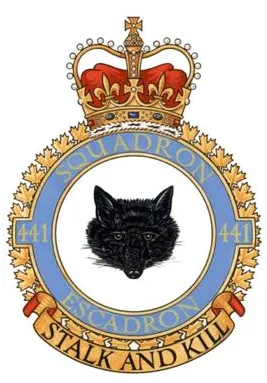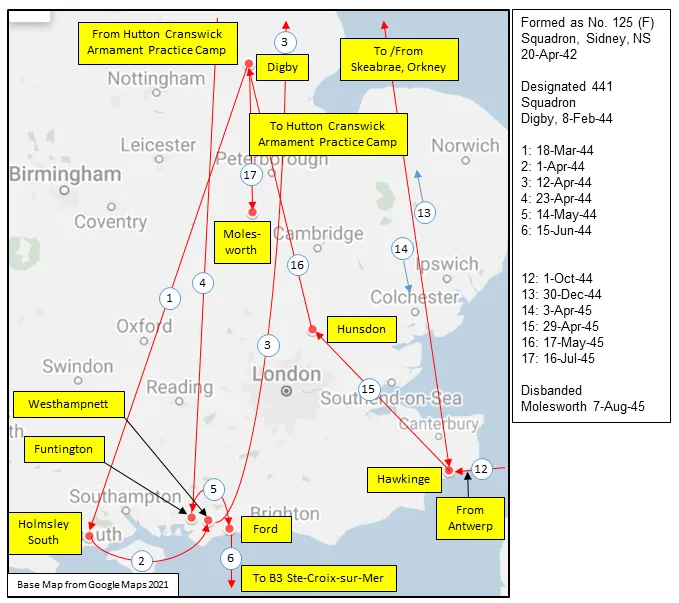Archibald, Ronald Chipman (Captain)
Killed in Flying Accident 1968-April-03


Birth Date: 1936-February-28
Born: Halifax, Nova Scotia
Parents: Son of Clyde and Hazel Fettery of Halifax, Nova Scotia.
Spouse: Husband of Helen. Father of Edward, Alan and Ronald. Brother of Elizabeth and Barbara.
Home: Halifax, Nova Scotia
Enlistment: Halifax, Nova Scotia
Enlistment Date: 1953-May-20
Decorations: CD

Service
RCAF
Unit
441 Sqn- Squadron
Stalk and Kill
Base
Rank
Captain
Position
Pilot
Service Numbers
R/A43643
Starfighter serial: 12740

One of the most revolutionary military aircraft ever produced, the F-104 Starfighter was designed by Kelly Johnson and his team in 1952, at Lockheed's legendary "skunk works" in Burbank, California. The USAF ordered two prototypes in early 1953 and the XF-104 first flew in February 1954. Records established by the F-104 Starfighter are impressive: world altitude & speed records of 91,240 feet and 1,404 mph respectively in May 1958, world altitude record raised to 103,395 feet in December 1958 and unofficial world altitude record of 120,800 feet in December 1963.
******The Canadair CF-104 Starfighter (CF-111, CL-90) is a modified version of the Lockheed F-104 Starfighter supersonic fighter aircraft built in Canada by Canadair under licence. It was primarily used as a ground attack aircraft, despite being designed as an interceptor. It served with the Royal Canadian Air Force (RCAF) and later the Canadian Armed Forces (CAF) until it was replaced by the McDonnell Douglas CF-18 Hornet.
Canadair's internal designation was CL-90 while the RCAF's version was initially designated CF-111, then changed to CF-104. Although basically similar to the F-104G, the CF-104 was optimized for the nuclear strike/reconnaissance role, fitted with R-24A NASARR equipment dedicated to the air-to-ground mode only as well as having provision for a ventral reconnaissance pod equipped with four Vinten cameras. Other differences included retaining the removable refuelling probe, initial deletion of the fuselage-mounted 20 mm (.79 in) M61A1 cannon (replaced by an additional fuel cell) and the main undercarriage members being fitted with longer-stroke liquid springs and larger tires.
The CF-104 entered Canadian service in March 1962. Originally designed as a supersonic interceptor aircraft, it was used primarily for low-level strike and reconnaissance by the RCAF. Eight CF-104 squadrons were originally stationed in Europe as part of Canada's NATO commitment. Wikipedia
![]() Wikipedia Canadair CF-104 Starfighter
Wikipedia Canadair CF-104 Starfighter
![]() YouTube Canadair CF-104 Starfighter
YouTube Canadair CF-104 Starfighter
The Starfighter on display outside the Canadian Warplane Heritage Museum is a CF-104D, a two seat trainer version. The aircraft was acquired from the Department of National Defence in late 1995.
Unit Desciption
441 Sqn Stalk and Kill ("Silver Fox")
History of the Squadron before and during World War II (Aircraft: Spitfires of several Mks, Mustang III)

No 441 (F) Squadron was formed in Sydney, NS ![]() as No. 125 (F) Squadron RCAF on 20 April 1942. It flew Hawker Hurricane aircraft on East Coast air defence. It was the fourth of six home squadrons transferred overseas without its aircraft, and was re-designated No. 441 (F) Squadron RCAF at Digby, Lincolnshire, UK
as No. 125 (F) Squadron RCAF on 20 April 1942. It flew Hawker Hurricane aircraft on East Coast air defence. It was the fourth of six home squadrons transferred overseas without its aircraft, and was re-designated No. 441 (F) Squadron RCAF at Digby, Lincolnshire, UK ![]() on February 8 1944. It flew Spitfire aircraft in offensive and defensive operations in the preparation for D-Day, and afterwards gave close support to the ground troops. It moved with the ground troops through France and Belgium, and returned to the UK in October 1944 and flew from various bases there until the end of hostilities in Europe. In May 1945 the squadron was re-equipped with Mustang aircraft, to provide fighter cover for long-range bomber groups, but were never operational in this role. The squadron was disbanded at Molesworth, Huntingdonshire, UK
on February 8 1944. It flew Spitfire aircraft in offensive and defensive operations in the preparation for D-Day, and afterwards gave close support to the ground troops. It moved with the ground troops through France and Belgium, and returned to the UK in October 1944 and flew from various bases there until the end of hostilities in Europe. In May 1945 the squadron was re-equipped with Mustang aircraft, to provide fighter cover for long-range bomber groups, but were never operational in this role. The squadron was disbanded at Molesworth, Huntingdonshire, UK ![]() on August 7, 1945.
on August 7, 1945.
In the course of operations, the squadron flew 3148 sorties for the loss of16 pilots, of whom 2 were killed, 7 presumed dead and 6 POWs. They accounted for 56 enemy aircraft confirmed destroyed and 12 damaged. In ground attacks they were credited with 500-plus vehicles. The squadron had 3 aces: Flight Lieutenant D.H. Kimball, DFC; Flight Lieutenant G.E. Mott, DFC and Flight Lieutenant T.A. Brannigan DFC. The squadron amassed 9 DFCs, 1 Croix de Guerre (France) and 3 MiDs. Battle Honours were: Defence of Britain 1945, Fortress Europe 1944, France and Germany 1944-45, Normandy 1944, Arnhem, Walcheren.Wikipedia, Kostenuk and Griffin
Maps for Movements of 441 Squadron 1944-45

MAP 1: 441 Squadron Movements 1944-45 (right-click on image to display enlarged in new tab)
|

MAP 2: 441 Squadron Movements 1944-45 (Detail of Map 1)
|

441 Squadron History Summary 1944-45

441 Squadron History Summary 1944-45 Page 2

History of the Squadron Post-WWII (Aircraft: Vampire III, Sabre 2, 5, 6, Starfighter, Hornet)
No 441 Squadron reformed at RCAF Station St. Hubert ![]() on 1 March 1951, flying de Havilland Vampire III and later Canadair Sabre Mks. 2, 5 and 6. They joined No 1 (Fighter) Wing, then located at RAF North Luffenham, in Rutland, England
on 1 March 1951, flying de Havilland Vampire III and later Canadair Sabre Mks. 2, 5 and 6. They joined No 1 (Fighter) Wing, then located at RAF North Luffenham, in Rutland, England ![]() on 13 February 1952. The squadron was temporarily situated at 3 Wing Zweibrücken, Germany
on 13 February 1952. The squadron was temporarily situated at 3 Wing Zweibrücken, Germany ![]() on 21 December 1954, before moving to their intended destination, RCAF Station Marville, France
on 21 December 1954, before moving to their intended destination, RCAF Station Marville, France ![]() . It was selected as one of the eight squadrons to be re-equipped with the CF-104 Starfighter, so it was deactivated on 1 September 1963 at Marville and then reactivated (reformed) as No 441 Strike/Attack squadron on 15 September. It then moved with 1 Wing to CFB Lahr, Germany
. It was selected as one of the eight squadrons to be re-equipped with the CF-104 Starfighter, so it was deactivated on 1 September 1963 at Marville and then reactivated (reformed) as No 441 Strike/Attack squadron on 15 September. It then moved with 1 Wing to CFB Lahr, Germany ![]() in April 1967. On 1 February 1968 the squadron was integrated into the Canadian Armed Forces. In 1971 the squadron moved to CFB Baden-Soellingen
in April 1967. On 1 February 1968 the squadron was integrated into the Canadian Armed Forces. In 1971 the squadron moved to CFB Baden-Soellingen ![]() and changed its name to 441 Tactical Fighter Squadron. They disbanded again in 1986 and then finally reformed at 4 Wing Cold Lake, Alberta
and changed its name to 441 Tactical Fighter Squadron. They disbanded again in 1986 and then finally reformed at 4 Wing Cold Lake, Alberta ![]() on 26 June 1986, flying CF-18 Hornet aircraft. The squadron flew mostly close air support and battlefield air interdiction missions over Kosovo and the Federal Republic of Yugoslavia, under Task Force Aviano, 5 Allied Tactical Air Force from 12 April to 10 June 1999.
on 26 June 1986, flying CF-18 Hornet aircraft. The squadron flew mostly close air support and battlefield air interdiction missions over Kosovo and the Federal Republic of Yugoslavia, under Task Force Aviano, 5 Allied Tactical Air Force from 12 April to 10 June 1999.
On 6 July 2006, No 441 Squadron was finally stood down (disbanded), and its crews amalgamated with 416 Tactical Fighter Squadron at CFB Cold Lake and re-formed as 409 Tactical Fighter Squadron. The squadron's colours and battle honours have been placed in Sydney, Nova Scotia, where it first operated.